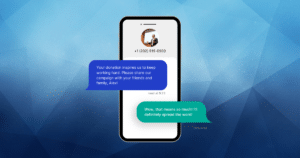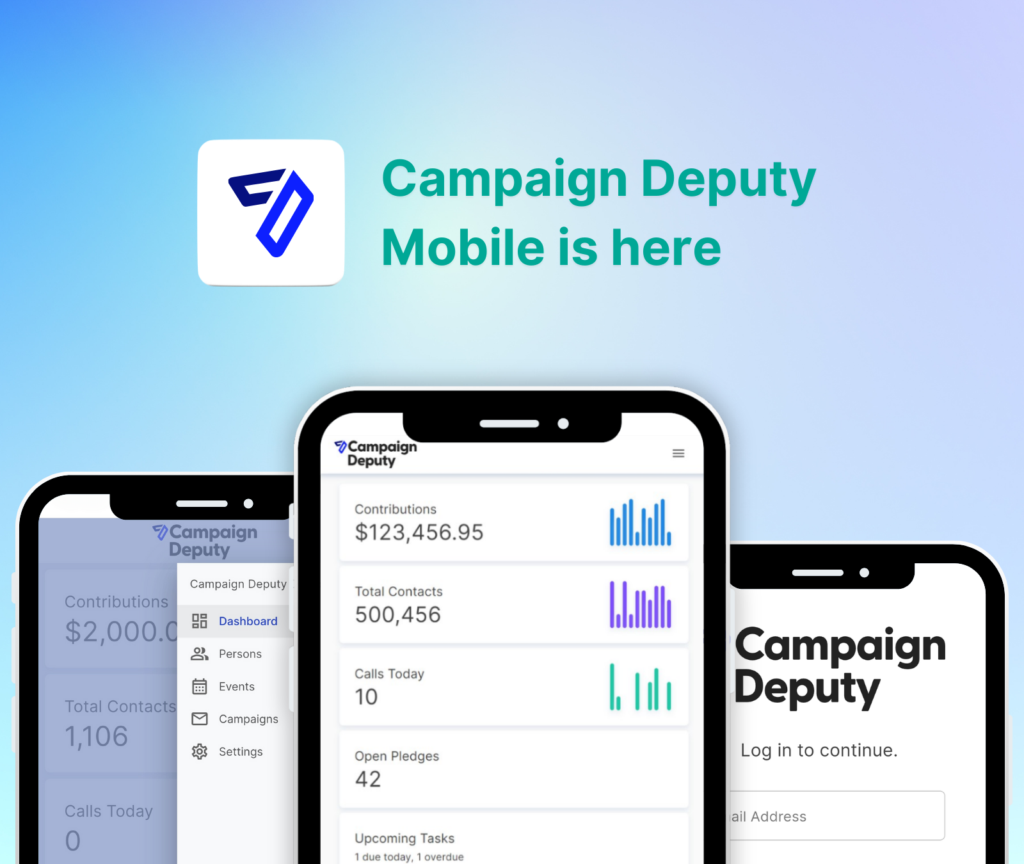Finding donors for your nonprofit organization or political campaign can seem daunting if you don’t know where to start.
The world is full of people who want to give to worthy causes, but your job is to find them and show them why your cause is worthwhile.
In this post, we’re going to look at how to find donors and sponsors for your nonprofit. We’ll cover everything from identifying your target audience to creating a compelling case for support. We’ll also share some tips on how to use fundraising software to streamline your fundraising efforts.
If you’re ready to start finding donors for your nonprofit, then keep reading. We’ll give you some pointers on how to do it, and we’ll even give you a free trial of our fundraising software so you can see how it works.
Click here to learn more and get started with Campaign Deputy today!
How To Find Donors For Your Nonprofit
To begin, obviously there are many ways to go about finding people willing to give to your cause.
However, here are the 10 methods we’d recommend trying first:
- Leverage your relationships
- Research potential donors
- Host fundraising events
- Network at local business events
- Turn your website visitors into donors
- Grow a community on on social media
- Run ads on social media
- Ask for referrals
- Rent or buy mailing lists
- Turn one-time givers into regular donors
Each of these fundraising methods are adaptable and scalable for a variety of charities, nonprofits, and political campaigns.
Let’s look at each of these options in more detail.
1. Leverage your relationships
The best place to start looking for donors and sponsors is by tapping into your existing relationships.
People who know, like, and trust you are likely to donate and ultimately recommend your cause to their own network of donors.
The secret to leveraging your own relationships is not overdoing it.
Constantly asking for donations might hurt your relationships, so be mindful of when and how you use your network for fundraising.
Instead, focus on building relationships with people who are interested in your cause and who you think would be a good fit for your organization.
Here are some tips for leveraging your existing relationships for fundraising:
- Start by asking your closest friends, family, and colleagues for support. These are the people who are most likely to be interested in your cause and who are most likely to donate.
- Attend events and meetings where you can meet new people. This is a great way to introduce your cause to new people and to build relationships with potential donors.
- Use social media to connect with people who are interested in your cause. Share your organization’s news and updates, and ask people to like and share your content.
- Create a compelling case for support. Explain why your cause is important and why people should donate to your organization.
- Be persistent, but not too pushy. Don’t be afraid to ask people for donations, but don’t be too aggressive with your ask.
By following these tips, you can leverage your existing relationships and are more likely to find donors and sponsors for your organization.
2. Research potential donors
Other good places to continue your search are similar nonprofit organizations like yours. That way you can identify who’s already giving to those causes.
Targeting donors who are already supportive of similar causes is a reliable way to find funding early on. With some effort, you’ll likely find contacts of individual donors or larger contributors who qualify.
Here’s how to find previous donors to other nonprofits:
- Look at nonprofit websites. Many nonprofits list their donors on their website. This is a great place to start your research.
- Subscribe to their newsletters. Nonprofits typically send out newsletters that list their donors. This is a great way to stay up-to-date on who is donating to your potential competitors.
- Attend their networking events. Nonprofits oftentimes hold networking events where you can meet potential donors. This is a great way to build relationships with people who are interested in your cause.
- Look at their publicly available annual reports. All nonprofits publish annual reports that list their donors. This is a great way to get a comprehensive list of potential contributors. Here are a few websites to get you started: GuideStar, Foundation Center, & The IRS
You can then compile a list of donors to reach out to for contributions to your cause. Be sure to explain why your cause is important and why you believe they would be a good fit for your organization.
The Crucial Role of Call Time
3. Host fundraising events
A great way of finding willing donors is to host events or cultivation parties.
If you have strong relationships with existing donors, ask those with good networks to host fundraising events of their own and invite their friends to attend.
Use this opportunity to network with possible donors and take a moment during the event to stand up and talk about your cause.
Ideally, you should ask your host to say a few words about why they support you and why they believe their friends should too.
Make sure you’re gathering as many contact details as possible using a guest book or by simply grabbing their business cards, so you can contact them the following day about donating to your nonprofit.
Don’t forget – the day after the event, send out a thank-you note to all of the guests. You can also include a link to your donation page in the thank-you note.
4. Network at local business events
Networking is a great way to connect with potential donors and sponsors for your nonprofit. By attending networking events, you can meet people who are interested in your cause and who may be willing to support your organization.
Here are some tips for networking as a nonprofit:
Do your research. Before you attend a networking event, take some time to research the event and the guest list. This will help you target your conversations and make a good impression.
Be prepared to talk about your cause. When you meet people at networking events, be prepared to talk about your nonprofit and why you are passionate about its work. Be clear about what you are looking for in terms of support, whether it is donations, sponsorships, or volunteer help.
(I.e., brush up on your elevator pitch!)
Be genuine and helpful. Don’t just focus on asking for people’s money or time. Instead, focus on being genuinely helpful and connecting with people on a personal level (Remember what we said about not being aggressive?). This will make you more memorable and more likely to solicit the support you need.
Follow up. After you attend a networking event, be sure to follow up with the people you met. This could mean sending them a thank-you note, connecting with them on social media, or inviting them to learn more about your nonprofit.
Here are some places to find local networking events:
- BNI (Business Networking International)
- Rotary Club International
- LinkedIn Groups
- Local chamber of commerce
- Facebook Groups for local businesses
Rather than simply asking for donations at these events (which might be seen in a negative light), use the opportunity to add value to the group by connecting people and being a useful part of the community.
You’re more likely to see success this way.
Here are some specific examples of how you can add value to networking events:
- Offer to introduce people who might be interested in working together.
- Share your expertise on a particular topic.
- Offer to help with event planning or promotion.
- Volunteer your time to a local organization.
By adding value to networking events, you will be more likely to build relationships with people who can help your nonprofit achieve its goals.
5. Turn your website visitors into donors
Your website is also a great way of finding donors online.
If you haven’t already, make it easy to donate. Your donation page should be clear and easy to use. Make sure it is prominently displayed on your website and that it includes all of the necessary information, such as your organization’s name, tax ID number, and donation options.
Use call-to-actions like contact forms or pop-ups to grab your visitor’s attention. Call-to-action buttons are a great way to encourage visitors to donate. You can use buttons to ask people to donate, sign up for your mailing list, or learn more about your organization.
Ask visitors to exchange their contact details for a free resource, so you can add them to your mailing list. Offering free resources, such as merchandise displaying your brand, e-books, webinars, or checklists, is a great way to attract visitors to your website and to build relationships with potential donors.
When they’re on your mailing list you can keep reaching out to them with interesting information about your nonprofit, and success stories to get them excited about donating. Be sure to include interesting content, such as relevant achievements, updates on your work, and calls to action.
Try not to ask for donations too often and cause unsubscribes, but rather show donors what their contributions are allowing your organization to do. When you send out emails to your donors, be sure to include stories about how their contributions are making a difference. This will help them see the impact of their donations and make them more likely to continue donating.
6. Grow a community on social media
Another way of finding donors online is by using social media like Facebook, TikTok, Twitter, Instagram, Threads, or even LinkedIn.
However, make sure you choose the right platforms. Not all social media platforms are created equal. Some platforms are better suited for certain types of organizations.
For example, Instagram and Facebook are great platforms for reaching a wide audience, while LinkedIn is a better platform for reaching professionals.
Most people now use social media to some extent, and growing an audience of supportive followers who want to share your message can grow your list of donors very quickly.
Your goal is to get more followers and then “de-platforming” those followers by getting them onto your mailing list using free giveaways and resources.
If a social media platform goes down or you’re locked out of your account for some reason, you don’t want to be in a situation where you can’t communicate with donors.
Remember, growing your mailing list should always be your main priority.
7. Run ads on social media
Gaining social media “foot traffic” early on can be challenging. If you want to accelerate the growth of your donor community on social media, you can run ads.
Depending on which social media you’re using, ads can be extremely cheap and they’re a great way of generating interest in your cause.
Fundraising using ads on platforms like Facebook or TikTok will give you a lot more reach than depending on organic growth alone.
You can even bypass asking them to join your community on the platform and send them straight to a call-to-action where they’re asked to give their email address for a free give-away.
Also, consider running social ads if you’re trying to organize an in-person fundraising event because you can target donors based on their geographic locations too.
8. Ask for referrals
Once you have (hopefully) established a website and social media page(s) to reference, asking your existing donors to spread the word is a great way to find new donors for your nonprofit.
These donors are already familiar with your organization and its work, so they are more likely to be receptive to your request. They may also be able to connect you with other people who are interested in your cause.
You can do this using a short introductory email and asking existing donors to forward it to their network.
From your intro email, link to a purpose-built page on your website where you can get new donors to sign up.
Referrals are perfect for growing social proof and will increase the chances of new donors coming on board.
9. Rent or buy mailing lists
If you have the budget, renting or buying mailing lists from reputable brokers can accelerate your donor recruitment process.
Keep in mind, that sending cold emails to prospective donors may be considered spam, so always be mindful of how you reach out.
Rather than immediately asking for donations in your emails, talk about the good things your nonprofit is doing.
Highlighting successful projects will increase the likelihood of getting people interested in your cause.
You may need to run a sequence of multiple emails since most campaigns achieve the best results after about the 5th outbound email.
10. Turn one-time givers into regular donors
The best way to find donors for your cause is by encouraging people to donate again.
If they donated in the past, they’ve shown their interest and willingness to give to your cause. They’ve already taken the first step, so it’s much easier to convince them to donate again than it is to find new donors.
Here are a few things you can do to turn one-time donors into repeat donors:
Grow and maintain an active email list of donors. This is essential for staying in touch with your donors and keeping them informed about your work. You can use your email list to send out regular updates, invitations to events, and appeals for donations. Here’s a great CRM tool that can help with that: https://campaigndeputy.com
Keep your donors informed about new projects you’re working on. This shows them that their donations are making a difference and that their support is appreciated. You can also share stories about the impact of your work, which can help to motivate donors to give again.
Show them how you’ve successfully used their donations in the past. This will help them to see that their money is being put to good use. You can share stories about how your donations have helped to improve the lives of those you serve, or you can provide financial reports that show how their donations have been used.
Make it easy for them to donate again. This means providing multiple ways for them to donate, such as through your website, by mail, or over the phone. You should also make sure that your donation process is easy and secure.
By following these tips, you can turn one-time donors into repeat donors and build a strong foundation of support for your cause.
Conclusion
Finding donors can be challenging, but there are many effective fundraising methods available. And while this certainly isn’t an exhaustive list, by using the methods outlined in this article, you can use them to reach your fundraising goals more quickly.
However, one of the most important steps you can take towards achieving your goals is to grow your mailing list. Expanding your contact list ensures that you have a way of reaching potential donors, especially in cases where other methods may have failed.
So, are you ready to get started? Choose two to three methods mentioned in this article that you find most promising and try them out today. With perseverance and commitment to the cause, you can achieve your desired results and be well on your way to reaching your fundraising goals.
We wish you good luck in your efforts and are confident that with the right approach, you can achieve success!





